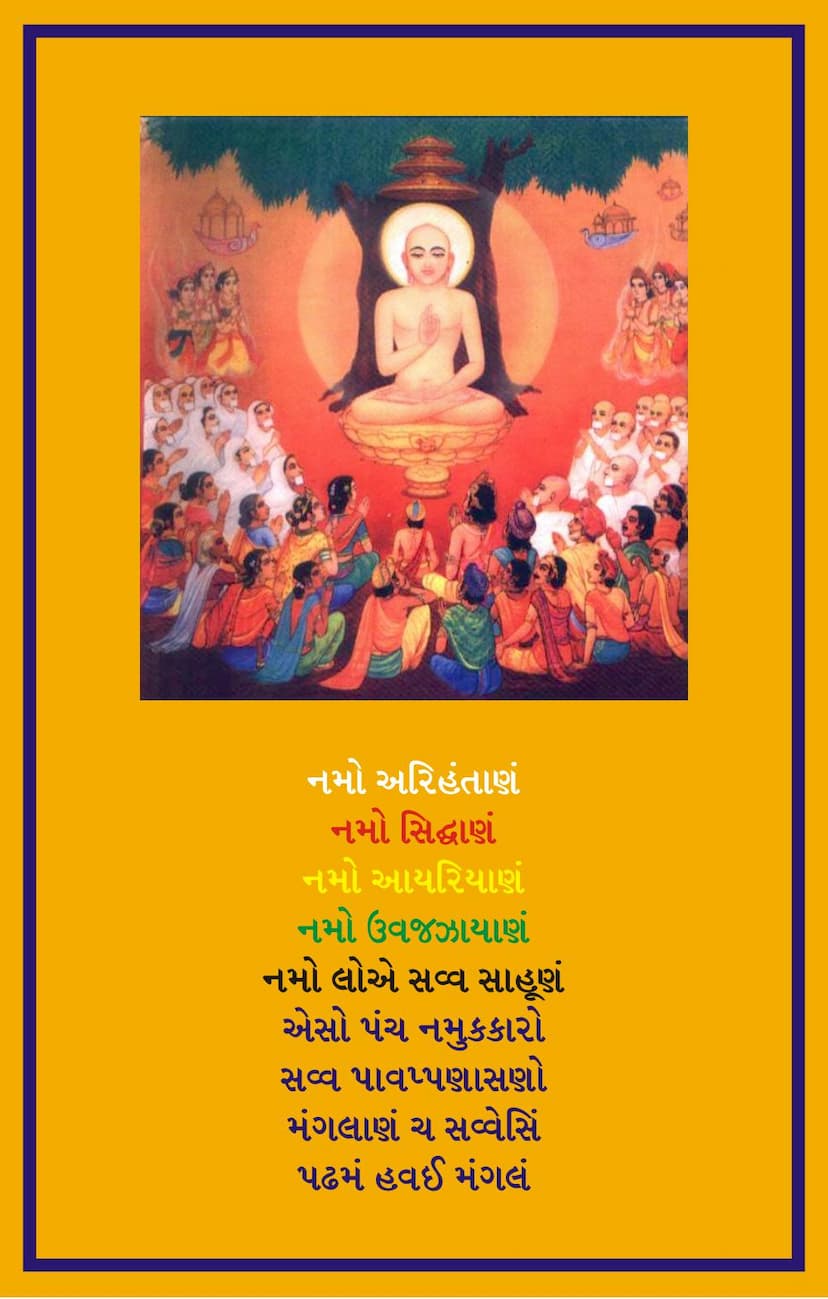Agam 10 Ang 10 Prashna Vyakaran Sutra Sthanakvasi
Added to library: September 1, 2025

Summary
Certainly, here's a comprehensive summary in English of the Jain text you provided, based on the provided pages:
Book Title: Agam 10 Ang 10 Prashna Vyakaran Sutra Author: Ghasilal Maharaj Publisher: A B Shwetambar Sthanakwasi Jain Shastroddhar Samiti
Overall Nature of the Text:
This text is a Jain Agam scripture, specifically the "Prashna Vyakarana Sutra" (प्रश्न व्याकरण सूत्र), which is part of the 10th Ang (chapter) of the Jain canon. The book is published by the Akhil Bharat Shwetambar Sthanakwasi Jain Shastroddhar Samiti and features a commentary (vyakhya) by Ghasilal Maharaj. The title itself, "Prashna Vyakarana," suggests it deals with questions and their explanations, likely concerning Jain philosophy, ethics, and the path to liberation.
Key Content Revealed in the Provided Pages:
-
Invocation and Auspicious Beginning (Mangalacharan):
- Pages 1 and 60-61 start with the traditional Jain invocation: "Namo Arihantanam," "Namo Siddhanam," etc., followed by verses in Sanskrit and Gujarati (and likely Hindi and other languages as indicated on page 4). These verses are salutations to the Arihants, Siddhas, Acharyas, Upadhyayas, and Sadhus, recognizing the five supreme beings and auspicious entities. Page 60-61 presents the mangalacharan in a meter called "Indra Vajra" and the commentary on it.
-
Author and Commentary:
- The commentary is by P.P. Acharya Shri Ghasilalji Maharaj (परम पूज्य आचार्य श्री घासीलालजी महाराज), identified as a "Jainacharya" and "Jain Dharma Divakar" (Sun of Jain Dharma).
- The text also acknowledges Muni Shri Kanhaiyalalji Maharaj (मुनि श्री कन्हैयालालजी महाराज) as the organizer of the publication, who is described as a Sanskrit-Prakrit scholar and an expert in Jain Agam.
-
Publisher and Edition Information:
- The publisher is Shri Akhil Bharat Shwetambar Sthanakwasi Jain Shastroddhar Samiti, located in Rajkot, Saurashtra, India.
- The first edition was published in 1962 CE (Vikram Samvat 2018, Veer Samvat 2488).
- The publication was made possible with the financial support of Shri Mukanchandji Baliya and his wife Smt. Suganbaiji (page 4 and 18), prominent individuals from Pali.
-
Content Overview (Index - Pages 11-16):
- The index reveals the extensive and detailed nature of the text. It is divided into two main parts and further into multiple studies (Adhyayan).
- Part 1: Focuses on concepts like Ashrava (आस्रव - influx of karmas) and Samvara (संवर - cessation of karmic influx). It delves into:
- The nature of Ashrava and Samvara.
- The classification of "Adharmadwar" (अधर्मद्वार - doors leading to non-virtue/unrighteousness), including Mruthavad (मृषावाद - false speech), Adattadan (अदत्तादान - stealing), Abrahma (अब्रह्म - celibacy violations), and Parigraha (परिग्रह - greed/possessions).
- Detailed descriptions of various forms of violence (Pranavadh - प्राणीवध), the reasons for it, and the consequences.
- The suffering of beings in different realms (Naraka - hells, Tiryanch - animal realm, Manushya - human realm).
- The nature of falsehood, theft, and other vices.
- Part 2: Primarily deals with Samvara (संवर - the means to prevent new karma). It details:
- The five types of Samvara.
- Specific vows and disciplines, including Ahimsa (अहिंसा - non-violence), Satya (सत्य - truthfulness), Adattadan Viramana (अदत्तादानविरमण - abstaining from stealing), Brahmacharya (ब्रह्मचर्य - celibacy), and Aparigraha (अपरिग्रह - non-possession).
- The text likely outlines the practices and virtues associated with these vows.
-
Detailed Guidelines for Study (Page 6 & 10):
- The text provides specific instructions on when to study the "Mool Path" (मूल पाठ - the original text). This includes not studying during specific times like dawn, dusk, midday, midnight, and certain celestial phenomena like meteor showers, directional fires, loud thunder, or lightning.
- There are also prohibitions related to women during menstruation, and instructions to study in a clean, separate space.
- It lists 32 instances of "Aswadhyaya" (अस्वाध्याय - times when study is prohibited), categorized into those related to the sky (10) and those related to the physical body (10).
-
Biographical Information (Page 17-19):
- A brief biography of Seth Shri Mukanchandji Baliya is provided. He was a resident of Pali, a religious, knowledgeable, and liberal individual. His family lineage was known for its piety. He was also well-versed in astrology. The family's philanthropic activities are highlighted, including supporting educational institutions and orphanages. His passing is noted in Samvat 2018.
- The page also mentions the ongoing efforts of Acharya Shri Ghasilalji Maharaj in translating and editing Jain Agams into modern languages for the growth of Jainism, with the support of Seth Mukanchandji Baliya's sons.
-
List of Donors (Pages 20-58):
- A significant portion of the provided pages is dedicated to listing the names of numerous donors ("Datao ni Namavali") who contributed financially to the publication of the scriptures. These donors are categorized by their donation amount ("Múrabbi Shreeo" for higher amounts, "Sahayak Membere" for supporting members, and "Life Membero"). This highlights the community effort and patronage involved in preserving and disseminating Jain scriptures.
-
Nature of the Commentary (Vyakhyan):
- The commentary is titled "Sudarsini" (सुदर्शिन्याख्यया), meaning "one that provides a clear view" or "one that is pleasant to see." This indicates the commentary aims to make the complex sutras accessible and understandable.
- Page 61-63 reveals the commentary's philosophical depth, starting with the purpose of life, the pursuit of true happiness in Moksha (liberation), the importance of knowledge and action, and the concept of causality.
In essence, the provided pages offer a glimpse into:
- The sacredness and systematic structure of Jain Agam literature.
- The role of esteemed scholars and monks like Ghasilal Maharaj in preserving and explaining these texts.
- The strong community support and patronage vital for the publication of Jain scriptures.
- The intricate philosophical concepts within Jainism, particularly concerning karma, liberation, and the correct path of conduct, as elucidated by the Prashna Vyakarana Sutra and its commentary.
- The strict rules and disciplines (Aswadhyaya) that govern the study of these sacred texts.